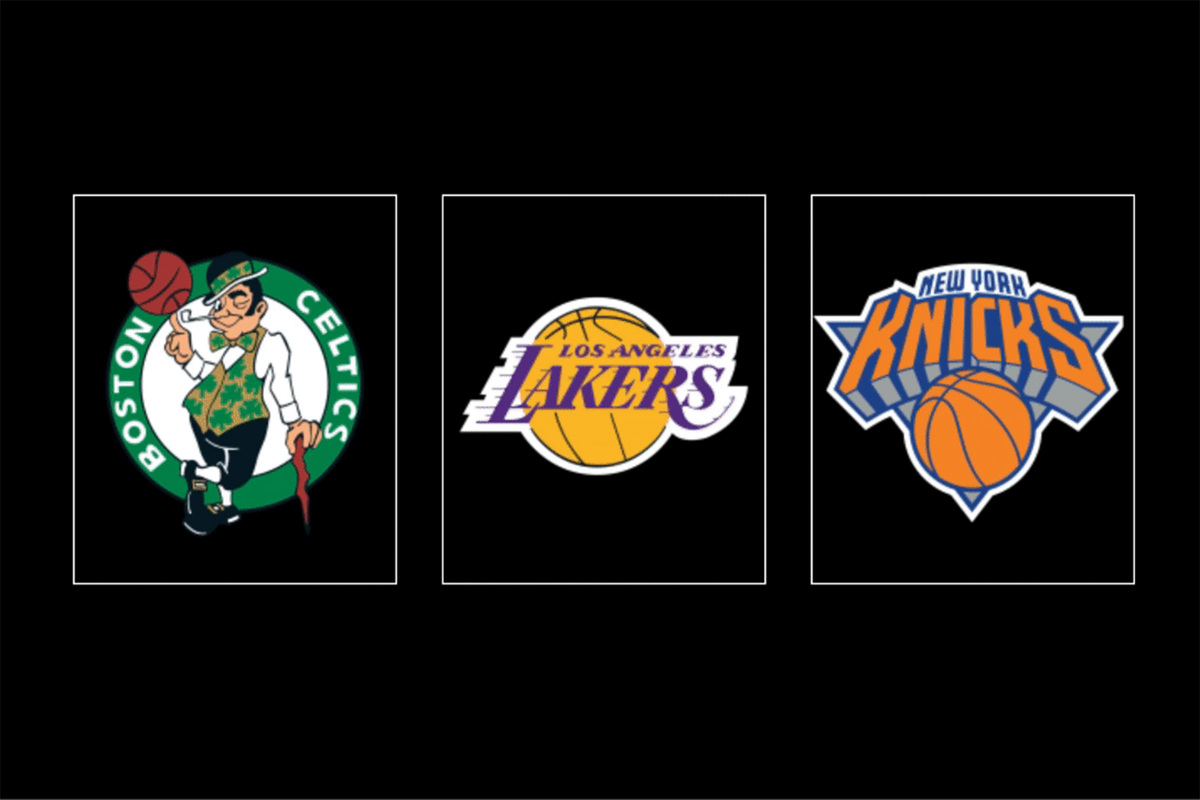Just over two months ago, the Lakers were walking a strange line between mediocrity and pageantry. LeBron James broke the all-time scoring record in a loss to the Thunder, who were then neck-and-neck with Los Angeles in the play-in race. It was like watching a retired actor get a lifetime achievement award, except James had 38 points in that game. The fans who cheered when he broke the record shuffled out of the arena before the game ended, and the Lakers dropped to 13th in the Western Conference standings.
With the season further teetering into insignificance, even James’s brilliance became depressing, undercut by the sense that what was left of his greatness was being wasted.
Around him, Anthony Davis ranged from spectacular to unavailable to trade machine fodder. The Lakers were in the bottom six in 3-point attempts and percentage. Russell Westbrook was simultaneously the favorite for Sixth Man of the Year and erasing hard-to-come-by leads, and James unsuccessfully lobbied to trade him for Kyrie Irving.
Building around James over the past few years has been far more complicated than it should have been. But when Irving landed in Dallas, Rob Pelinka and Co. packaged Westbrook, role players, and the Lakers’ 2027 first-round pick for D’Angelo Russell, Jarred Vanderbilt, and Malik Beasley. The Lakers finally leaned on a tried-and-true formula: surround James with shooters and defenders who can create extra possessions. Nothing has been the same since.
The Lakers are tied for seventh in net rating, third in defense, and 10th in pace since the trade, despite James missing 16 games. Russell, a dead-eye pull-up shooter and calming conductor, leads the Lakers with 2.7 3-point makes per game and Beasley, who makes 2.5, is right behind him. When Vanderbilt, a.k.a. “Dennis Rodman in training,” shares the floor with Davis, they gobble up 29.8 percent of the available offensive rebounds. Davis has been agile, aggressive, and mostly available. The Lakers’ half-court offense now hums with simplicity—an isolated side pick-and-roll between Davis and James here, a Beasley triple there, an Austin Reaves closeout attack there—while operating at a breakneck pace in transition. The Lakers have gone 9-2 when Russell, James, and Davis play together, albeit against a paper-thin schedule.
“We put ourselves in a position where we can move on,” James said before the Lakers’ play-in matchup against the Timberwolves, who lost Rudy Gobert and Jaden McDaniels to two very different self-inflicted punches. “That’s all we asked for, to put ourselves in a position to move on.”
Lakers basketball was a soul-sucking, uninspiring, and frustrating experience for the first half of the season. Now, after dispatching the Wolves 108-102 in an overtime rock fight to earn the 7-seed in the West, the greatest player of his generation, a step slower but at the height of his orchestral powers, has another real chance to add to his legacy.
Next, the Lakers will have to walk into the Grindhouse, where the 2-seed Memphis Grizzlies are 35-6, and steal one.
The series against the Grizzlies, who will be without Steven Adams and Brandon Clarke, will be massive for Davis. The big man is the Lakers’ best player on some nights, and he’s eager to prove his dominance to a wide-open Western Conference that’s unequipped to tussle with him.
Since entering the league, Davis has been sold as the big man’s bridge to the modern era of basketball. He can indeed answer any call on defense; he can switch onto the most slithery guards, and opponents shoot 6.8 percent worse near the rim when Davis is nearby. But he also toiled to develop an outside shot that’s never come along. The speed, reflexes, and above-average ballhandling ability that allow him to survive on the perimeter is downright dangerous when paired down low with his astonishing size and strength. As Michael Pina wrote earlier this season, Davis is finally realizing he is more of a blunt-force instrument than a Swiss Army knife, eschewing the pretty perimeter for brutish, ugly, but efficient drives to the rim.
The Grizzlies’ Jaren Jackson Jr., the league’s leading shot blocker, is the rare defender who can match Davis in size and strength. But while his foul rate has declined over the years, he’s still a touch too jumpy. Watch here as Davis repeatedly puts him in foul trouble:
It is tempting, in a world where Jackson has only six fouls to spare, to say the seas have parted for a Lakers playoff run. It is tempting, in other words, to ignore the 245 pounds of stocky, formidable muscle in the middle that is Xavier Tillman, Jackson’s fellow Michigan State alum. According to Second Spectrum, Davis managed a lowly 36 percent effective field goal percentage against Tillman this season.
Tillman, Clarke’s ground-bound and therefore oft-sidelined counterpart, can be useful against Davis in this series precisely because he’s as hard to move as a stone wall. He is only 6-foot-7, and can both use his low center of gravity to force Davis off balance and use his 7-foot-2 wingspan to contest Davis’s turnarounds and fades and get his arms in the way of lobs.
For Davis, unlocking the matchup against the Grizzlies will require a combination of strength, savvy, skill, and will. Jackson is one of the best defenders in the NBA. And Tillman is the kind of defender who can convince you it’s smart to settle; Davis’s average shot distance against Tillman is 12.9 feet, according to Second Spectrum. (The only players who forces him out farther are Clippers defensive anchor Ivica Zubac and Warriors stalwart Kevon Looney.) Davis will have to fight that urge, peppering in only enough jumpers to keep the defense honest. Striking this balance will be his challenge against Memphis and beyond, should the Lakers advance.
On the other end, Davis will have his hands full trying to slow down Ja Morant, who creates 1.188 points per chance coming off picks in which Davis is the screen defender. AD can minimize the passing angles Morant seemingly creates out of thin air and try to make his life difficult around the rim, but the Lakers need a better answer to Ja’s in-between game than the ones they’ve developed so far.
That’s where Vanderbilt, who just forced Anthony Edwards into one of his worst performances this season, comes in. Over the past two seasons, including as a member of the Timberwolves in last year’s playoffs, Vando has clamped down on Morant, holding him to 0.5 points per chance as his primary defender. Reaves might have the size, smarts, and speed to pick him up for a few possessions too. Russell, who has given up 1.13 points per possession on drives as a Laker, will need reinforcements, but that’s what Davis and Vando are for. Russell, in turn, spaces the floor while they can’t. Whether the Lakers’ revamped starting lineup, with a plus-20.6 net rating in a regular-season sample size of 77 minutes, can retain this balance will likely come down to how long James can maintain his sizzling outside shooting.
This new group is largely untested, but they also have a lot of room for growth. Westbrook’s old touches have funnelled to Reaves, who is smashing his own ceiling wide open on a seemingly weekly basis: a career-high 35 points here, a career-high 11 assists a few days later.
Reaves’s fearless, eyes-wide-open style makes him an X factor for L.A. His herky-jerky closeout drives, his deceptive strength, and his ability to stay balanced and finish with touch after being hit give you flashes of a low-usage Shai Gilgeous-Alexander with better playmaking. He certainly gets to the line at a comparable rate. He’s a gutsy lightning bolt coming off screens and handoffs, with a 40 percent pull-up 3-point jumper and quick decision-making ability. His makeup suggests he can be the kind of tough-shot maker who can blossom even as scouting reports key in on him more.
The Lakers, James pointed out after the play-in win, had a 0.3 percent probability of making the playoffs when they started the season 2-10. Thanks to their resilience, a midseason roster shakeup, and a little bit of luck, they’ve made it, armed with just enough markers of championship contention to be a threat: two top-10 players, high-end role players, shooting, defensive versatility, and a clear starting lineup. The road has not been easy, and it won’t get any easier. “Every year, it’s tough,” James said. “There’s too many great teams, great players. Every year is tough, no matter if you’re the 1-seed or the 8-seed.”

